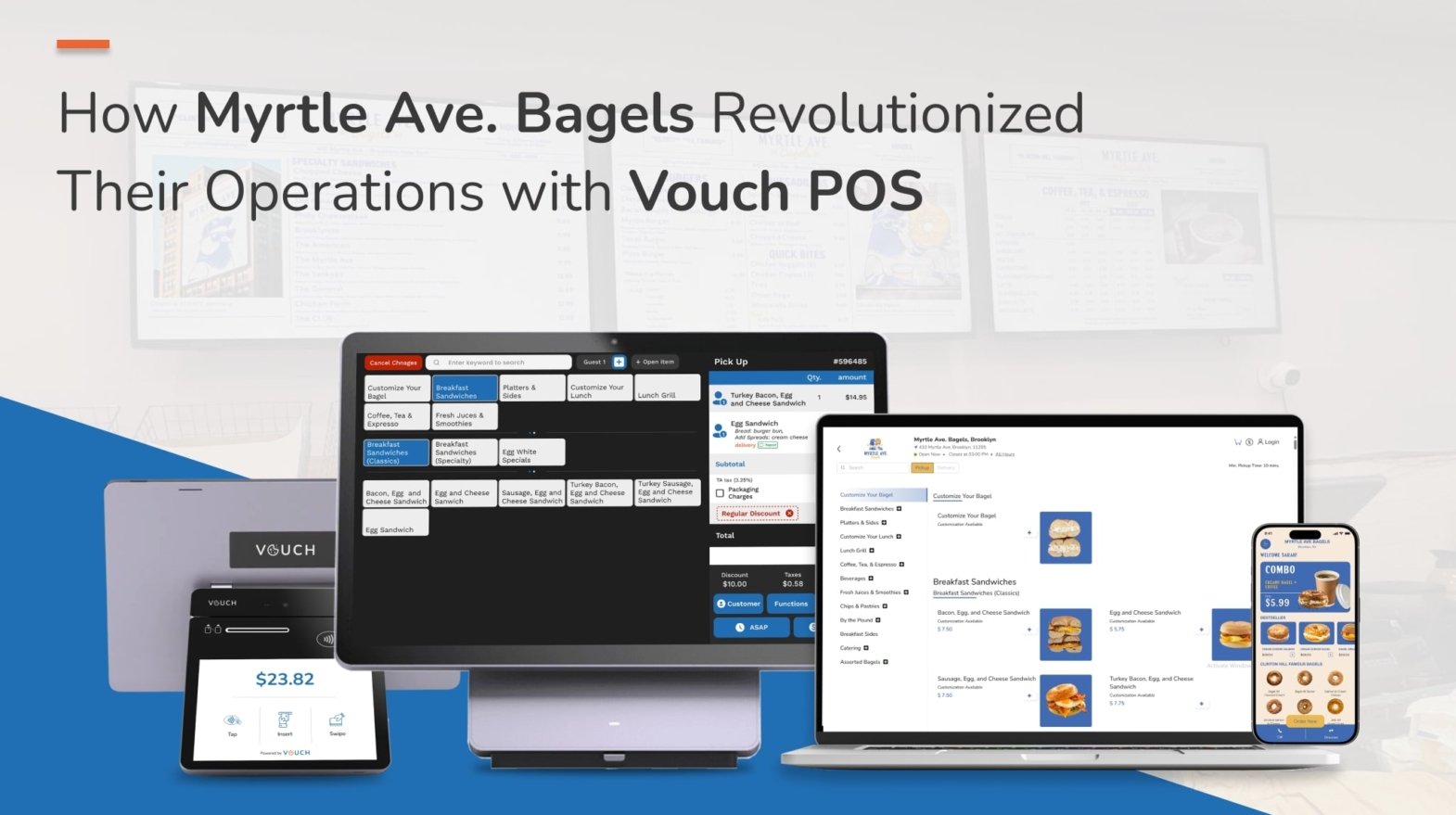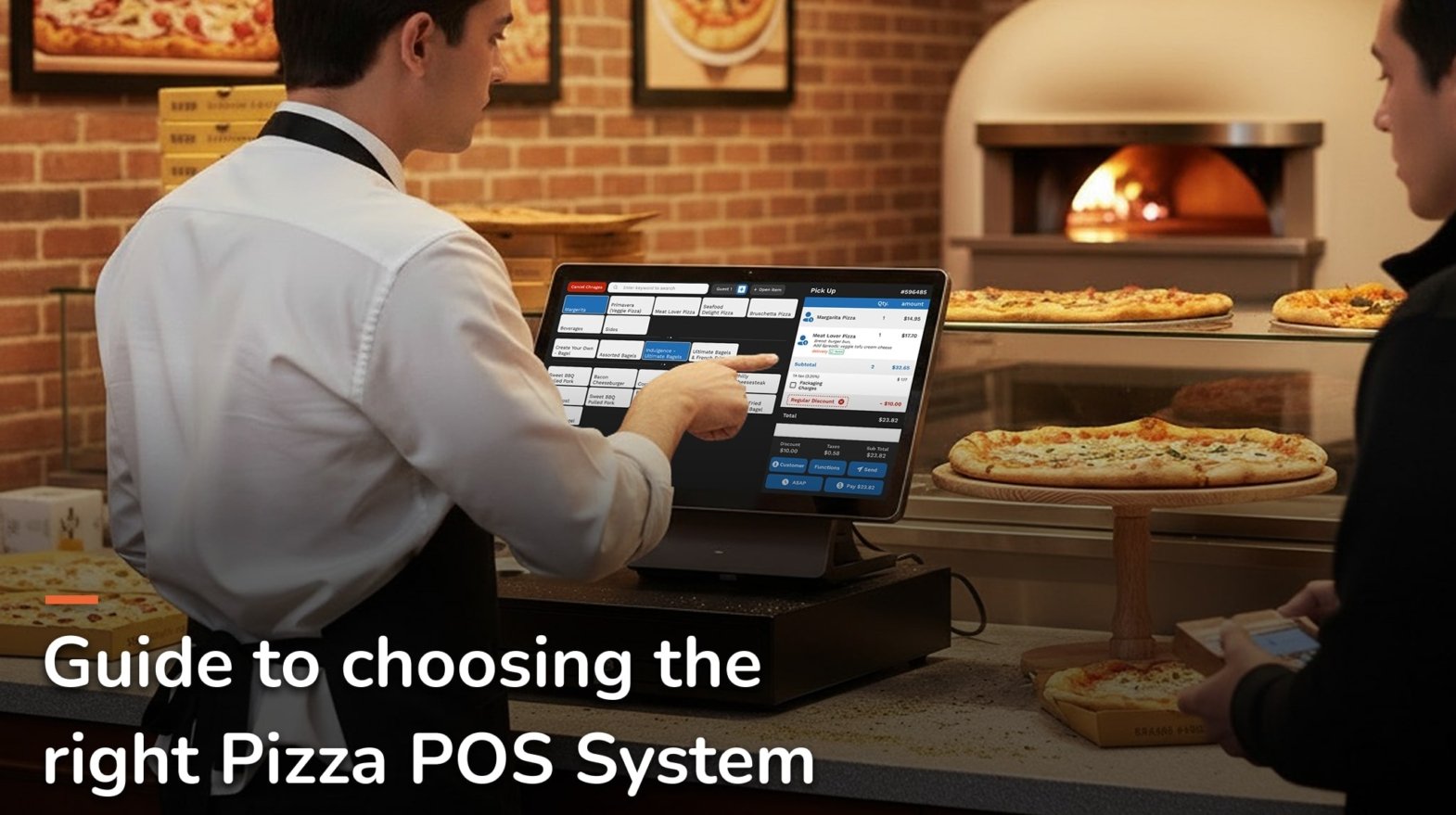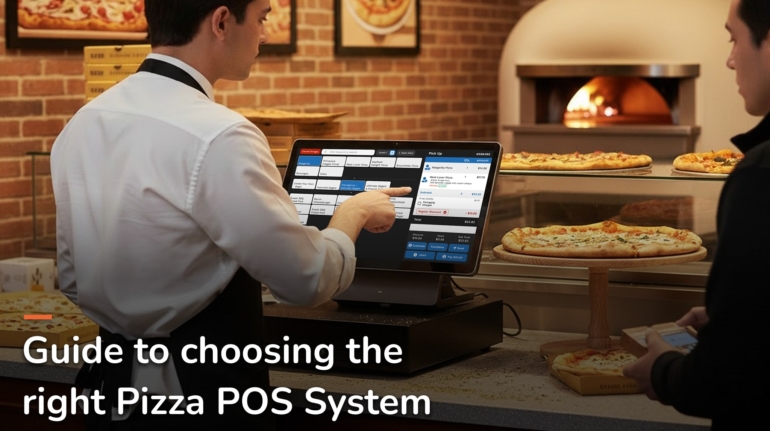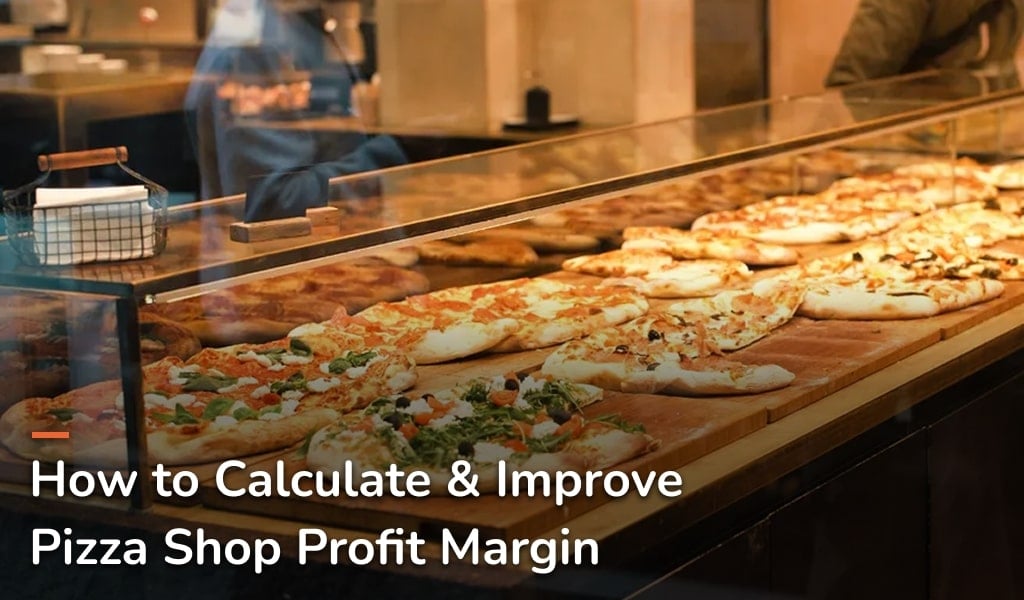
Running a pizza shop isn’t just about making great pies-it’s about staying profitable in a competitive market. In this blog, we’ll share proven strategies that top-performing pizzerias use to cut costs, streamline operations, and boost margins, along with clever hacks you can apply right away.
In This Post
- Key Takeaway
- How To Calculate Pizza Shop Profit Margins
- Pizza Profit Margin Calculator
- Earnings Breakdown How Much Do Different Types of Pizza Shops Make?
- 1. Independent Pizzerias (5–10%)
- 2. Franchise Pizza Shops (10–20%)
- 3. Gourmet & Artisan Pizzerias (~15%)
- 4. Takeout & Delivery-Only Pizza Shops (10–25%)
- Understanding the Cost of Goods Sold (COGS) in Pizza Restaurants
- Understanding Operating Costs in Pizza Restaurants
- How to Optimize Pizzeria Costs
- 1. Ingredient Sourcing
- 2. Labor Management
- 3. Energy & Utilities
- 4. Rent & Overhead
- Common Success Factors of High-Profit Pizzerias
- 1. Prioritize a Seamless Delivery Experience
- 2. Make Ordering Simple and Everywhere
- 3. Streamline Your Kitchen and Operations
- 4. Leverage POS Analytics and Reporting
- 5. Secret hacks to earn more margin
- Conclusion Take Control of Your Pizza Profits
Running a pizza restaurant can be incredibly rewarding – but how profitable is it, really?
The U.S. pizza industry is valued at over $46 billion, with more than 75,000 pizzerias competing nationwide. On average, a pizza shop makes about $600,000 in annual revenue, but the real measure of success lies in the profit margin, which usually falls between 10% and 20%.
That means for every $100 in sales, a well – run pizza shop might keep $10–$20 as profit. Yet, not every pizzeria hits those numbers – rising food costs, labor expenses, and local competition can make profitability a challenge.
Understanding your pizza economics and learning how to calculate your own margins is the first step to knowing whether your shop is on track or leaving money on the table.
More importantly, if your profit margins aren’t where they should be, there are proven strategies to improve them – from adjusting menu pricing to streamlining operations.
The difference between breaking even and thriving often comes down to these small but critical decisions.
Key Takeaway
Achieving strong profitability in the pizza business comes down to maximizing revenue while keeping operational costs under control.
Your actual revenue, expenses, and profit margins will vary depending on the type of pizzeria you run – with franchise shops generally reporting higher average sales and margins compared to independents.
- Smarter marketing that drives repeat orders
- Increasing average ticket size through combos and upselling
- Streamlining operations with technology
- Improving productivity and reducing waste
A comprehensive pizza pos system can be a game-changer - helping you track margins, manage expenses, and uncover new ways to grow your revenue.
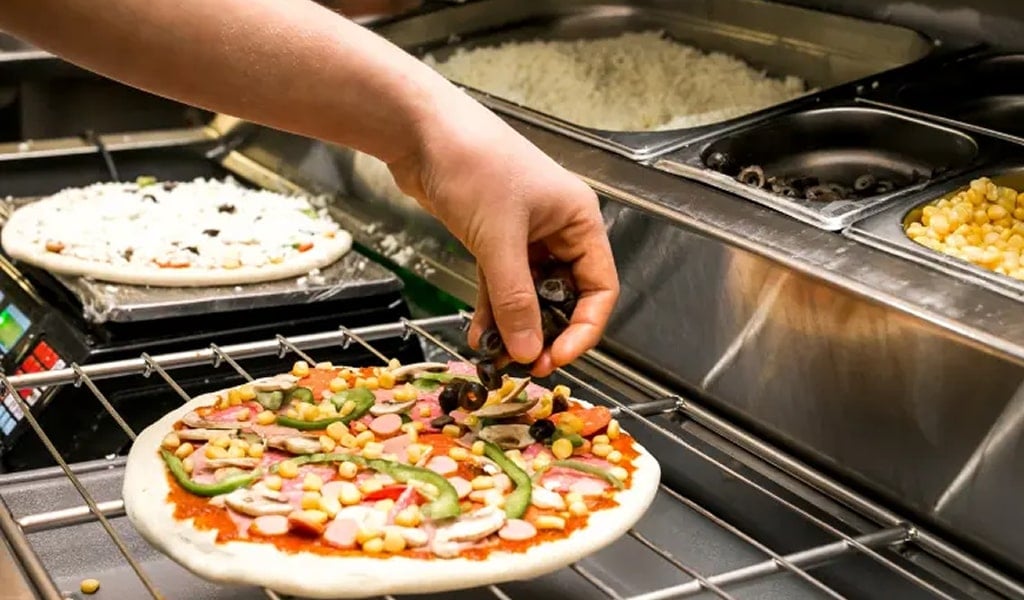
Pizza is one of the most beloved foods in the U.S. – in fact, Americans eat around 350 slices every second.
That popularity translates into big business: the average pizza shop brings in about $600,000 in annual revenue, with typical profit margins hovering around 10%–15%. That works out to roughly $90,000 in net profit per year for a well-run pizzeria.
Of course, these numbers don’t tell the whole story. While flour and water may be cheap, other costs add up quickly – from rent, labor, and utilities to cheese, toppings, and marketing spend. Independent pizza shops often face slimmer margins than big chains, sometimes as low as 3%–7%, especially if costs aren’t tightly managed.
The real key isn’t just serving the best slice in town – it’s about knowing your costs inside and out, pricing your menu strategically, and increasing sales volume.
The good news? With the right approach, pizza margins can improve significantly, turning a break-even shop into a thriving business.
How To Calculate Pizza Shop Profit Margins
Before you think about boosting profits, it’s important to understand how to calculate your pizza restaurant profit margin. The formula is straightforward:
(Net Profit × 100%) ÷ Total Revenue = Profit Margin
Let’s walk through an example:
- Assume your pizza shop generates $800,000 in annual revenue.
- Your cost of goods sold (COGS) – ingredients like dough, cheese, sauce, and toppings — comes to about 30%, or $240,000.
- Operating costs – including rent, wages, utilities, and marketing – take another 55%, or $440,000.
- That leaves a net profit of $120,000.
Now apply the formula:
($120,000 × 100%) ÷ $800,000 = 15% net profit margin.
Pizza Profit Margin Calculator
Earnings Breakdown: How Much Do Different Types of Pizza Shops Make?
| Type of Pizza Shop | Average Profit Margin | Why the Margin is Higher or Lower |
|---|---|---|
| Type of Pizza Shop: Independent Pizzerias | Average Profit Margin: 5% – 10% | Why: Usually run by local owners with limited buying power. Higher ingredient costs, marketing expenses, and strong competition from chains reduce margins. |
| Type of Pizza Shop: Franchise Pizza Shops | Average Profit Margin: 10% – 20% | Why: Benefit from brand recognition, bulk purchasing discounts, established systems, and strong marketing support. Franchise fees cut into profits, but higher sales volume helps margins. |
| Type of Pizza Shop: Gourmet & Artisan Pizzerias | Average Profit Margin: ~15% | Why: Can charge premium prices for unique, high-quality offerings. However, specialty ingredients and smaller customer base limit scalability, keeping margins moderate. |
| Type of Pizza Shop: Takeout & Delivery-Only (Ghost Kitchens) | Average Profit Margin: 10% – 25% | Why: Lower overhead (no dine-in costs, smaller staff) allows for higher potential margins. But profits can shrink if delivery platform fees and high competition eat into revenue. |
1. Independent Pizzerias (5–10%)
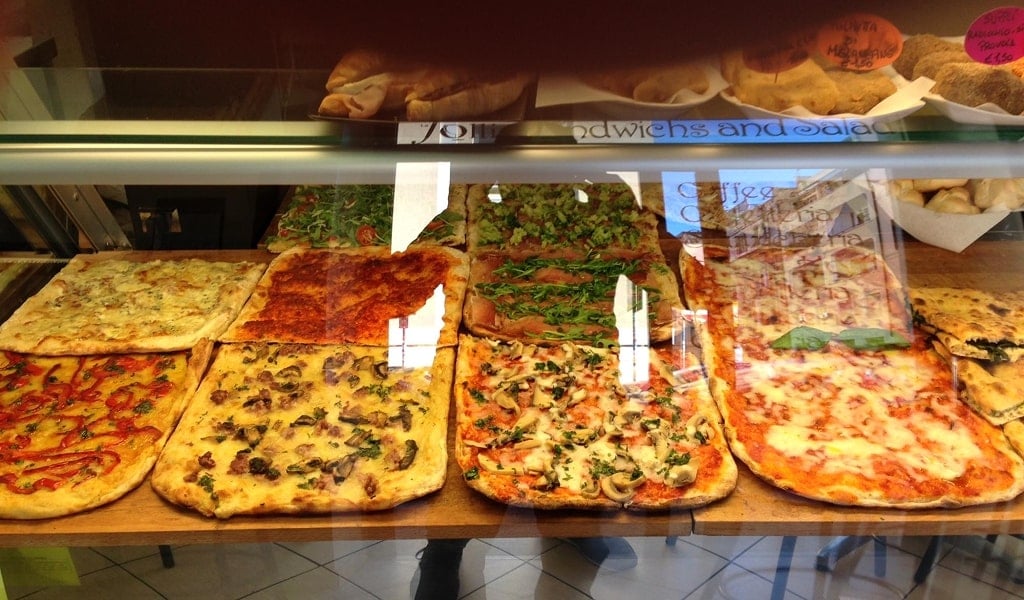
Independent pizza shops, often small and family-owned, are the backbone of local communities. They thrive on authenticity and customer loyalty, but their profit margins are usually lower than larger chains.
According to PMQ’s 2023 Pizza Power Report, there were 44,644 independent pizzerias in the U.S. in 2022, generating nearly $19.8 billion in revenue. That means the average shop brought in about $440,000 per year, with net profits typically landing between $22,000 and $44,000 annually (5–10% margin).
- Why Independent Pizzerias Can Be Profitable
- Strong local loyalty and word-of-mouth marketing.
- Flexibility to innovate with unique recipes, seasonal menus, or creative promotions.
- Lower franchise fees or royalty obligations compared to chain operators.
- Opportunities to carve out a niche (e.g., New York–style, wood-fired, organic, or gluten-free).
- Why Margins Stay Low
- Higher ingredient costs due to lack of bulk purchasing power.
- Limited brand recognition compared to national franchises.
- Marketing and advertising costs eat into profits.
- Operational inefficiencies (labor, rent, equipment maintenance) weigh heavier on small businesses.
Independent pizzerias can thrive if they build strong community relationships, control costs, and focus on a unique selling point. Without these, staying above the 5%–10% profit margin line is tough.
2. Franchise Pizza Shops (10–20%)
Franchise pizzerias benefit from the power of brand recognition, established systems, and bulk purchasing discounts. They often achieve higher sales volumes and more stable profit margins compared to independent operators.
According to the PMQ Pizza Power Report, there were 35,531 franchise pizza shop locations in the U.S. in 2022, generating more than $27 billion in revenue.
On average, that equals about $766,000 per store annually. With typical profit margins ranging from 10% to 20%, franchise owners could expect to take home $76,600 to $153,200 per year in net profits.
- Why Franchise Pizzerias Can Be Profitable
- Strong brand recognition drives consistent customer traffic.
- Access to national marketing campaigns and proven sales strategies.
- Bulk purchasing power reduces ingredient and supply costs.
- Standardized systems and training increase operational efficiency.
- Why Margins Don’t Go Higher
- Franchise fees and royalty payments eat into net profits.
- Limited flexibility – owners must follow corporate guidelines.
- High startup and ongoing costs (equipment, real estate, branding fees).
- Local competition between franchise locations can impact sales.
Franchise pizza shops offer a safer, more predictable path to profitability compared to independents, but owners trade flexibility for stability. Success depends on choosing the right brand and location to maximize those 10%–20% margins.
3. Gourmet & Artisan Pizzerias (~15%)
Gourmet and artisan pizzerias cater to customers who value premium ingredients, unique flavors, and a more upscale dining experience. These shops often stand out by offering wood-fired pizzas, organic toppings, or health-conscious options that justify higher menu prices.
According to Vetted Biz, the average revenue for a Blaze Pizza location – one of the most recognized artisan-style chains – is about $1.2 million annually. With an estimated 15% profit margin, that translates into around $180,000 in yearly net profits for an owner-operator.
- Why Gourmet Pizzerias Can Be Profitable
- Premium pricing: customers are willing to pay more for quality and uniqueness.
- Growing demand for healthier, artisan, or specialty menu options.
- Strong brand differentiation compared to traditional pizza chains.
- Opportunities to attract higher-income demographics and niche markets.
- Why Margins Don’t Go Higher
- Specialty ingredients cost significantly more, cutting into profits.
- Smaller target audience compared to mainstream pizza chains.
- Labor-intensive preparation methods increase operational costs.
- Heavy reliance on brand reputation and consistent quality.
Gourmet pizzerias strike a balance - higher revenues and stronger margins than independents, but with added risks tied to niche markets and higher costs. For operators who can consistently deliver premium quality, the ~15% margin offers healthy returns.
4. Takeout & Delivery-Only Pizza Shops (10–25%)
Takeout and delivery-only pizza shops – often called ghost kitchens or cloud kitchens – focus exclusively on off-premise dining. By eliminating the costs of a full-service dining room, they can run leaner operations while meeting the growing demand for convenience.
In 2022, one major delivery-focused franchise had 4,173 locations that together generated $3.52 billion in revenue. On average, each store made about $840,000 annually. With profit margins ranging from 10% to 25%, that equates to $84,000 to $210,000 in yearly net profits.
- Why Delivery-Only Shops Can Be Profitable
- Lower overhead costs (no dining room, smaller staff, reduced rent).
- High demand for delivery and takeout, especially post-pandemic.
- Flexibility to operate in smaller spaces or multiple locations.
- Potential for higher margins when delivery is managed in-house.
- Why Margins Can Shrink
- Depend on third-party delivery apps with high commission fees.
- Intense competition in the delivery market reduces pricing power.
- Limited opportunities for upselling without in-person dining.
- Customer loyalty is harder to build compared to dine-in experiences.
Delivery-only pizza shops offer the potential for strong margins (up to 25%), but profitability depends on controlling delivery costs and standing out in an increasingly crowded market. Operators who optimize operations and invest in direct ordering channels often see the best results.
Understanding the Cost of Goods Sold (COGS) in Pizza Restaurants
To truly understand pizza restaurant profit margins, you need to look beyond sales and dig into Cost of Goods Sold (COGS). COGS refers to all the direct expenses tied to running your business – everything from ingredients and labor to marketing and delivery costs. For pizzerias, managing these costs efficiently is just as important as generating revenue.
On average, a pizza shop spends a significant portion of its revenue covering these essential costs.
If your pizza shop generates $1,000,000 in annual revenue, here’s how much you’d typically spend in each category:
| Expense Category | % of Revenue | Cost on $1,000,000 Revenue | Explanation |
|---|---|---|---|
| Expense Category: Labor Costs | % of Revenue: 20% – 40% | Cost on $1,000,000 Revenue: $200,000 – $400,000 | Explanation: Wages, benefits, and payroll taxes. Heavier in full-service or dine-in models. |
| Expense Category: Marketing & Advertising | % of Revenue: 2% – 8% | Cost on $1,000,000 Revenue: $20,000 – $80,000 | Explanation: Local campaigns, social media ads, loyalty programs, etc. |
| Expense Category: Delivery Costs | % of Revenue: 5% – 10% | Cost on $1,000,000 Revenue: $50,000 – $100,000 | Explanation: In-house drivers, vehicle costs, or commissions from delivery platforms. |
| Expense Category: Franchise Fees | % of Revenue: 5% – 6% | Cost on $1,000,000 Revenue: $50,000 – $60,000 | Explanation: Applies to franchisees, covering royalties and brand support. |
Understanding Operating Costs in Pizza Restaurants
Beyond the direct costs of making and selling pizza (COGS), pizzerias must also account for operating costs. These are the expenses that keep the business running day to day, regardless of sales volume. While they may not seem as obvious as labor or ingredients, operating costs can significantly affect your bottom line.
Here’s how typical operating expenses break down as a percentage of total revenue:
| Expense Category | % of Revenue | Cost on $1,000,000 Revenue | Explanation |
|---|---|---|---|
| Expense Category: Rent & Utilities | % of Revenue: 10% – 15% | Cost on $1,000,000 Revenue: $100,000 – $150,000 | Explanation: Higher in prime city locations, lower in suburban or small towns. |
| Expense Category: Licenses & Permits | % of Revenue: <1% | Cost on $1,000,000 Revenue: $5,000 – $10,000 | Explanation: Usually fixed costs; don’t scale much with revenue. |
| Expense Category: Insurance | % of Revenue: <1% | Cost on $1,000,000 Revenue: $5,000 – $10,000 | Explanation: Covers liability, property, and employee-related risks. |
| Expense Category: Loan Payments | % of Revenue: 3% – 10% | Cost on $1,000,000 Revenue: $30,000 – $100,000 | Explanation: Higher for new shops with large startup loans. |
How to Optimize Pizzeria Costs
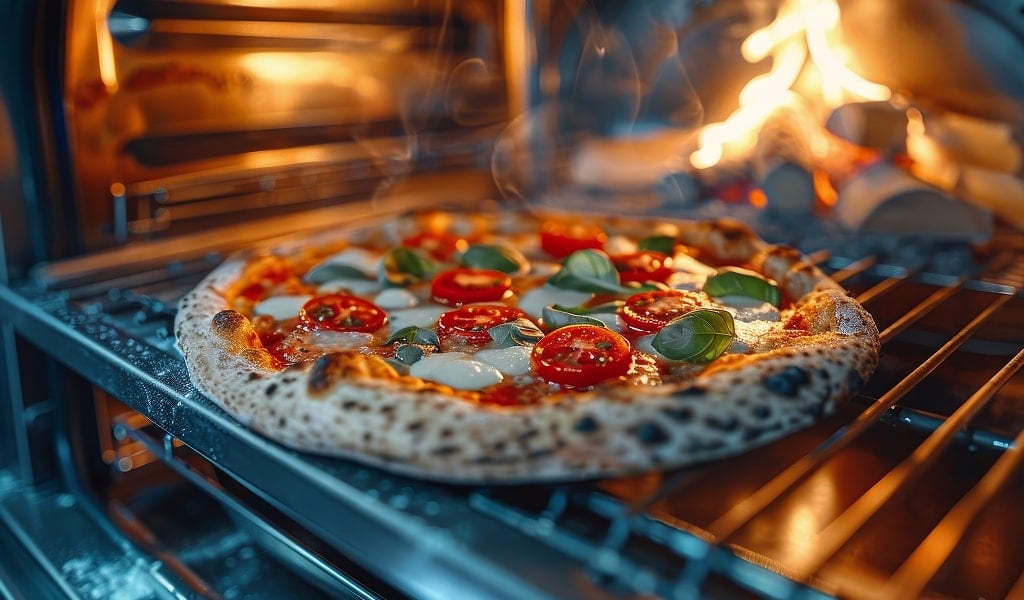
Running a profitable pizzeria isn’t just about boosting revenue – it’s also about keeping costs in check. By focusing on a few key areas, you can make a big difference in your bottom line without sacrificing quality or customer experience.
1. Ingredient Sourcing
- Build strong relationships with suppliers to unlock better pricing.
- Incorporate local or seasonal ingredients that are both cost-effective and fresh.
- Track and manage stock levels closely to reduce spoilage and over-ordering.
2. Labor Management
- Align staff schedules with customer demand to avoid overstaffing.
- Train employees to handle multiple tasks, making your team more flexible.
- Leverage POS or scheduling tools to automate time tracking and shift planning.
3. Energy & Utilities
- Invest in energy-efficient ovens, refrigerators, and lighting to cut monthly bills.
- Keep up with regular equipment servicing to avoid costly breakdowns.
- Fine-tune heating and cooling systems to balance comfort with cost savings.
4. Rent & Overhead
- Revisit lease agreements and negotiate for more favorable terms when possible.
- Explore cost-saving models like ghost kitchens or shared spaces.
- Optimize layout and seating to get the most value out of your rented space.
Common Success Factors of High-Profit Pizzerias
Running a pizza restaurant comes with its fair share of challenges – from handling staffing issues and managing customer expectations to keeping a close eye on your financials. With all that pressure, settling for slim margins can feel discouraging. The good news? Many pizzerias find ways to consistently earn 15% or more in profits.
Here are five proven practices that set those highly profitable pizza shops apart:
1. Prioritize a Seamless Delivery Experience
For many customers, their first interaction with your pizzeria isn’t the dining room-it’s the delivery box arriving at their doorstep. That’s why successful pizza shops treat delivery as a core part of their brand experience.
Smart pizza shop make delivery shine by:
- Offering flexible options like curbside pickup and contactless delivery.
- Providing real-time order tracking, so customers never feel left in the dark.
- Motivating drivers to return quickly between runs by offering small rewards, prepaid meal options, or bonus pay for fast turnaround times.
These adjustments may seem small, but they keep orders moving faster and ensure customers get their pizza hot and fresh. In an industry where speed and quality are everything, optimizing delivery isn’t just convenient-it’s a profit driver.
2. Make Ordering Simple and Everywhere
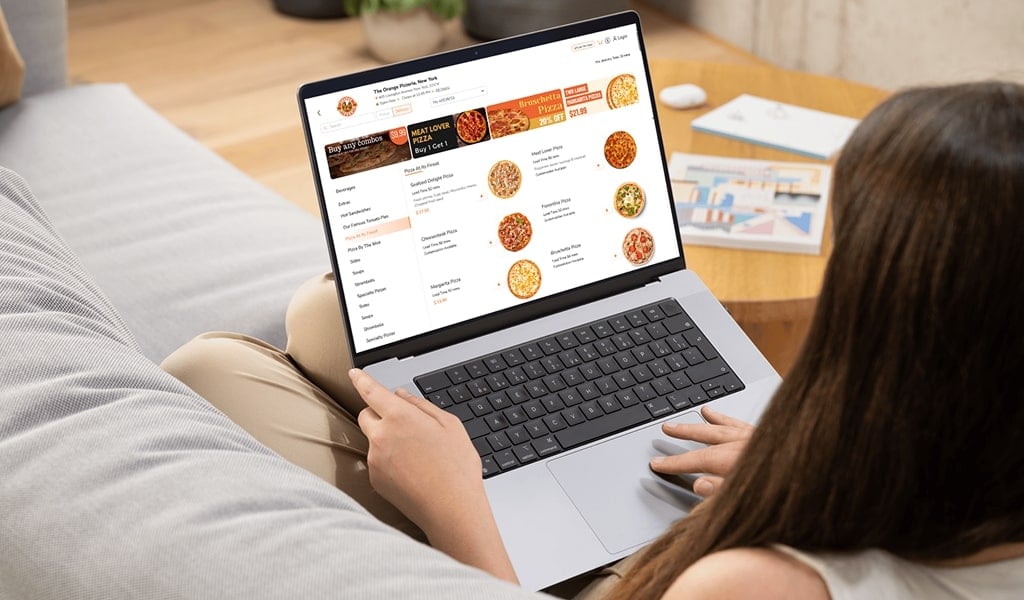
Even the best pizza can lose out if it’s hard to order. Today’s customers expect convenience, and highly profitable pizza shops deliver it at every touchpoint.
That means:
- Pizza restaurant online ordering system that lets customers order directly without paying commissions to third-party online ordering apps. Not only does this save money for the business, but it also ensures customers see your true menu prices, often lower than what’s listed on third-party platforms.
- First-party mobile app with loyalty rewards and push notifications to keep your brand on their home screen.
- Caller ID integration with your POS so when someone phones in, you instantly see their name, order history, and even allergy notes-making repeat orders fast and personal.
- Smart customization tools like half-and-half toppings, crust swaps, and add-ons that make customers feel in control of their order.
The goal is simple: remove every barrier between craving and checkout. If customers can’t order easily from you, they’ll choose someone else who makes it effortless-no matter how much better your pizza tastes.
3. Streamline Your Kitchen and Operations

With labor shortages and shrinking profit margins, running an efficient kitchen is more important than ever. A well-organized workflow ensures staff know exactly what to do and when-reducing errors, saving time, and improving consistency.
Modern Pizza POS with Kitchen Display Systems (KDS) are game-changers here. Instead of printing tickets or letting staff guess the process, orders are routed step by step:
- Station-based workflow: One team member handles dough, another adds sauce and toppings, a third manages the oven, and a fourth takes care of packaging and delivery. Each order flows seamlessly across KDS terminals, keeping everyone focused on their role.
- Real-time updates: Toppings, crust types, and special instructions display clearly, ensuring pizzas are made exactly as the customer ordered.
- Faster service, fewer mistakes: By assigning clear responsibilities and using technology to manage order flow, you avoid bottlenecks, improve accuracy, and keep customers happy.
💡 Profitability Impact: Every mistake avoided saves on wasted ingredients, every minute saved allows you to process more orders during rush hours, and every satisfied customer is more likely to come back. Streamlined operations don’t just make life easier in the kitchen-they directly boost your bottom line.
4. Leverage POS Analytics and Reporting

The most profitable pizza shops don’t just sell pizzas-they track the numbers behind every slice. With the right POS system, you can understand exactly what it takes to break even, cover staff wages, and turn a healthy profit.
Vouch POS gives you insights at your fingertips with easy-to-read dashboards and visual reports (bar charts, pie graphs, trend lines)-no more messy spreadsheets.
Here’s what you can track:
- Sales performance: See which pizzas and toppings are customer favorites, identify your best-selling days and peak rush hours, and measure the impact of coupon codes or promotions.
- Order channels: Compare how much business comes from online orders, mobile apps, and in-store sales to decide where to focus your marketing.
- Staff and operations: Monitor labor hours, payroll, average order completion time, and table turnover so you can fine-tune scheduling and reduce bottlenecks.
💡 Profitability Impact: With this data, you can hire extra staff only on busy days like Friday–Sunday, bulk order popular ingredients before running out, and fix process gaps that slow down service. Even better, Vouch POS provides a reporting mobile app so owners can track sales, discounts, and staff tips in real time-anytime, anywhere.
5. Secret hacks to earn more margin
Sometimes, profitability isn’t about cutting-edge tech or big investments-it’s about small, clever changes that add up to real dollars. Here are a few tried-and-true hacks the most profitable pizzerias use:
Sell by the slice as well as the whole pie
A $20 pizza cut into eight slices can sell for $4 each, generating $32 total. That’s an extra $12 in profit from the same product. Plus, selling by the slice helps reduce waste-if a pizza is slightly imperfect, slices can still move fast at the counter.
Weigh your dough balls every time
Over-portioned dough means wasted flour, yeast, and oil. Under-portioned dough can shrink pizza size and hurt customer perception. Consistency here protects both your margins and your reputation.
Control high-cost toppings with portion tools
Ingredients like mozzarella, premium meats, or signature sauces can eat into profits quickly. Standardized scoops or portion spoons ensure every pizza gets just the right amount—enough for flavor, but never so much that your margins suffer.
Master the “cheese lip” technique
Training staff to leave a small, consistent ring of dough around the edge prevents cheese from spilling into the oven (and going to waste). The bonus? A more appealing crust that customers love.
Simplify your menu for ingredient overlap
Every topping should work across multiple pizzas, sides, or specials. Eliminating one-off ingredients reduces spoilage, lowers inventory costs, and keeps operations lean.
Run “use-it-up” daily specials
Got a surplus of bell peppers or cheese nearing expiration? Create a fun, limited-time pizza special and sell it at a strong margin. Customers love the novelty, and you turn potential waste into profit.
💡 Profitability Impact: These small adjustments might seem minor, but together they can add thousands to your bottom line each year-all while improving consistency and customer experience.
Conclusion: Take Control of Your Pizza Profits
Running a profitable pizza restaurant isn’t just about making great food-it’s about mastering your numbers, optimizing operations, and finding smart ways to increase margins.
From managing food costs and staff expenses to boosting direct online orders and using powerful reporting tools, every percentage point matters. And when you layer in simple hacks-like selling by the slice, portioning dough and toppings correctly, or creating smart daily specials-you can turn small changes into big profits.
This is exactly where Vouch POS helps. With real-time analytics, commission-free online ordering, and easy-to-use reporting, you’ll always know where your money is going and how to increase your bottom line.
👉 Don’t leave profits on the table. Schedule your free demo with Vouch POS today or reach out directly at +1 315-915-5787 or info@vouchpos.com . The sooner you start, the sooner you’ll see the difference in your margins.
Connect directly with a Vouch POS tech expert. No sales pressure, just a casual conversation to see if we're a fit for your restaurant.

